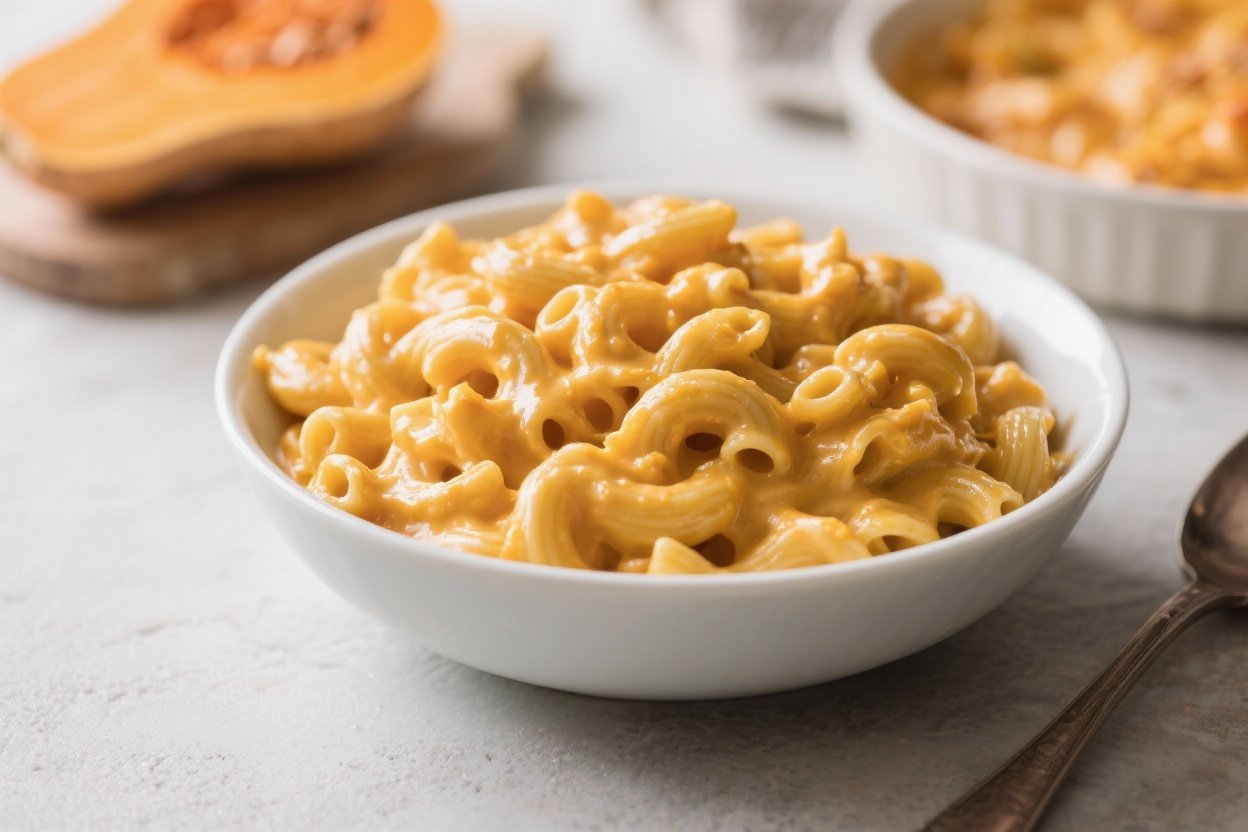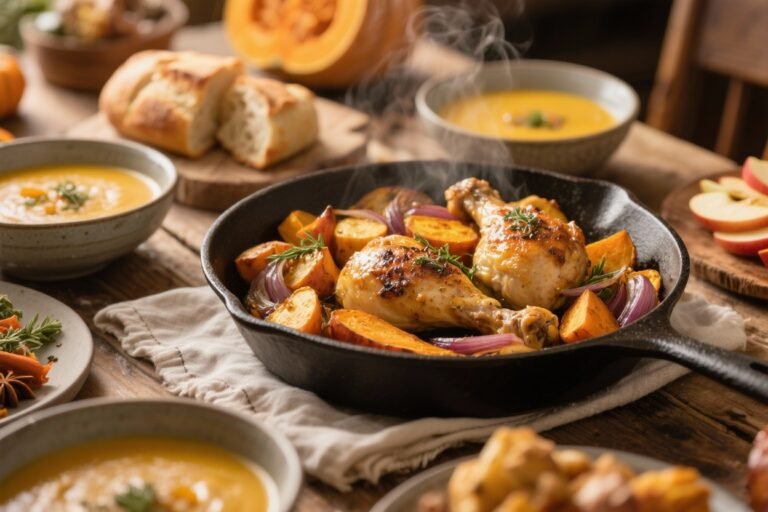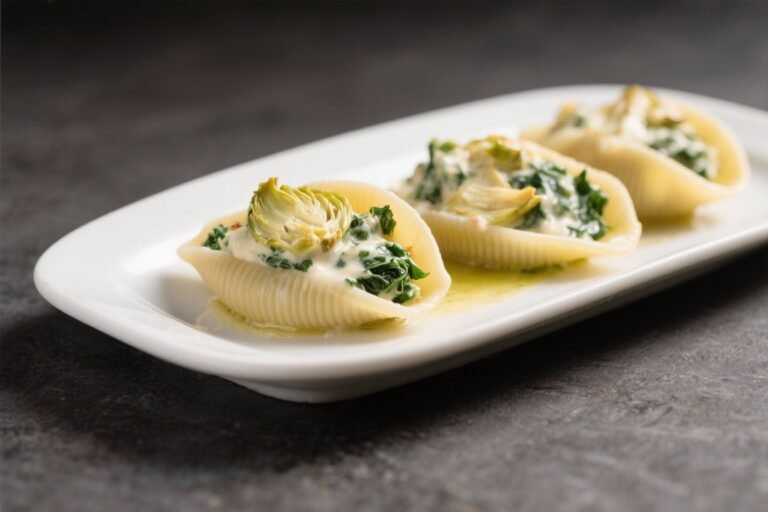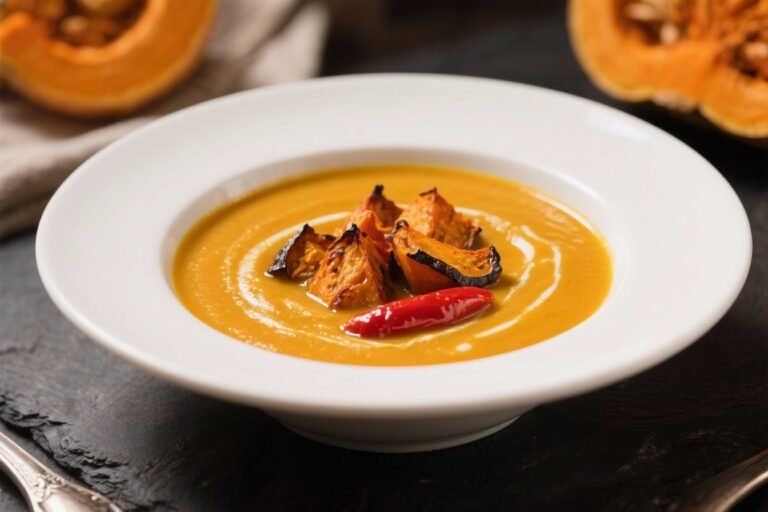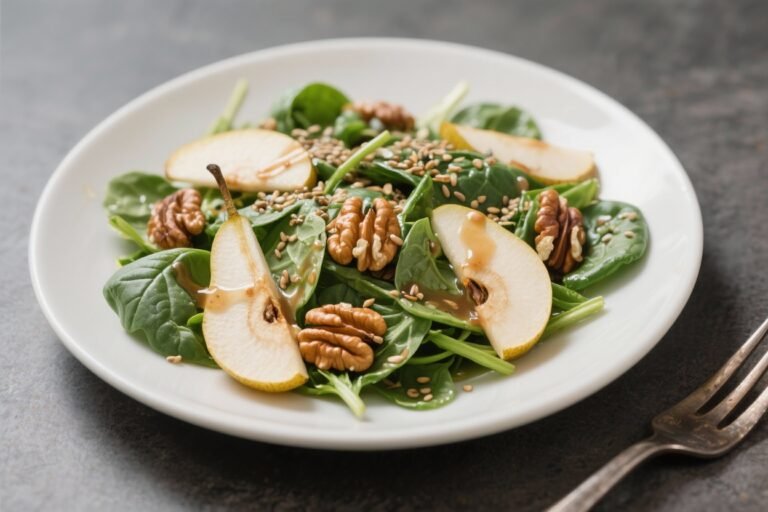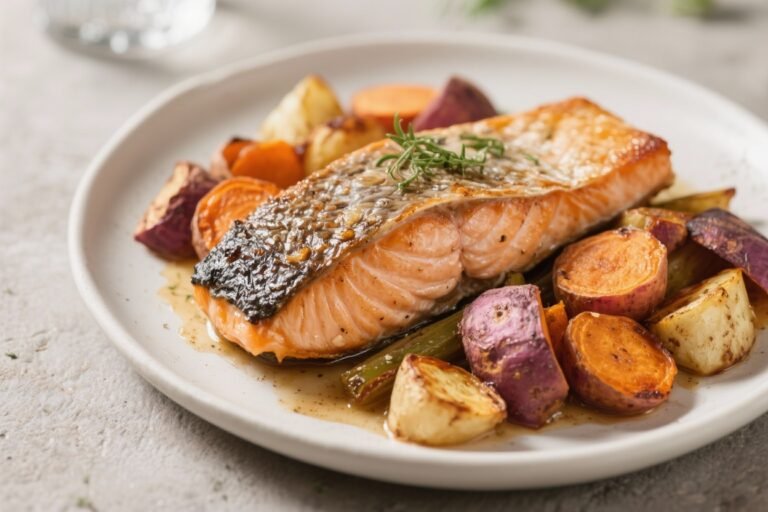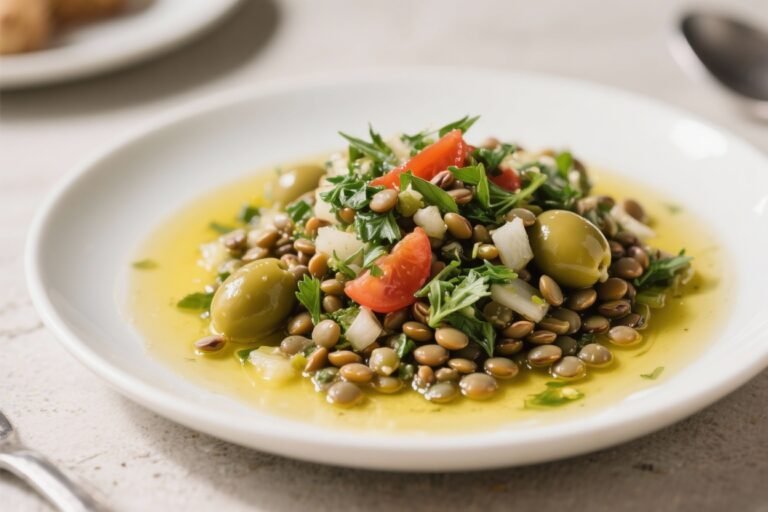How to Make Butternut Squash Mac and Cheese Creamy & Rich: The Cozy, Cheesy Upgrade You’ll Crave Weekly
Forget soggy noodles and bland cheese sauce. This is mac and cheese with a PhD in comfort and a minor in sneakily nutritious. Butternut squash turns the sauce velvet-level smooth, adds natural sweetness, and makes your cheese pull actually look cinematic.
You’ll get that rich, silky finish without needing a stick of butter for each serving. Want a weeknight win that tastes like a weekend flex? Keep reading.
What Makes This Recipe Awesome
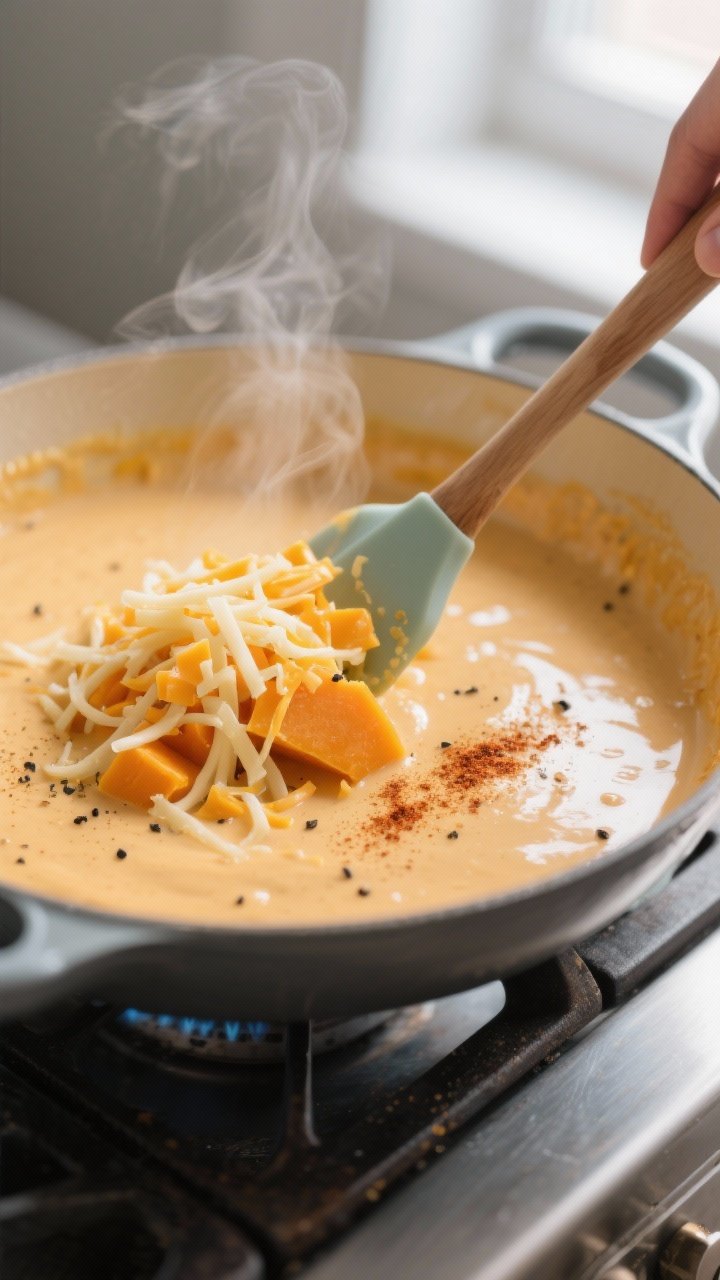
- Creamy without being heavy: Butternut squash blends into a lush base that lightens the dairy while keeping the sauce ultra-smooth.
- Big flavor, not just cheese: Aromatics, a hint of mustard, and a touch of nutmeg give it depth, not just salt and fat.
- Kid-friendly, adult-approved: Sweet squash meets sharp cheddar for a balanced bite.
Everybody wins.
- Leftovers reheat like a dream: The sauce stays silky, not grainy or oily—yes, even tomorrow’s lunch.
- Flexible: Works with gluten-free pasta, lactose-free milk, and different cheeses. A real team player.
What You’ll Need (Ingredients)
- 1 medium butternut squash (about 2 to 2.5 lbs), peeled, seeded, and cubed
- 12 oz dry pasta (elbow, shells, or cavatappi)
- 1 tablespoon olive oil
- 1 small yellow onion, chopped
- 2 cloves garlic, minced
- 2 cups low-sodium vegetable or chicken broth
- 1 cup milk (whole milk preferred; 2% works)
- 1/2 cup heavy cream (or sub more milk for lighter; but cream = extra silk)
- 2 cups sharp cheddar cheese, freshly shredded
- 1/2 cup Gruyère or Parmesan, freshly shredded (adds nutty depth)
- 2 tablespoons unsalted butter
- 1 tablespoon Dijon mustard
- 1/4 teaspoon ground nutmeg
- 1/2 teaspoon smoked paprika (optional but excellent)
- Salt and freshly ground black pepper, to taste
- Optional topping: 1 cup panko breadcrumbs + 1 tablespoon melted butter + pinch of salt
- Optional add-ins: crisp bacon, sautéed spinach, roasted broccoli, hot sauce
Let’s Get Cooking – Instructions
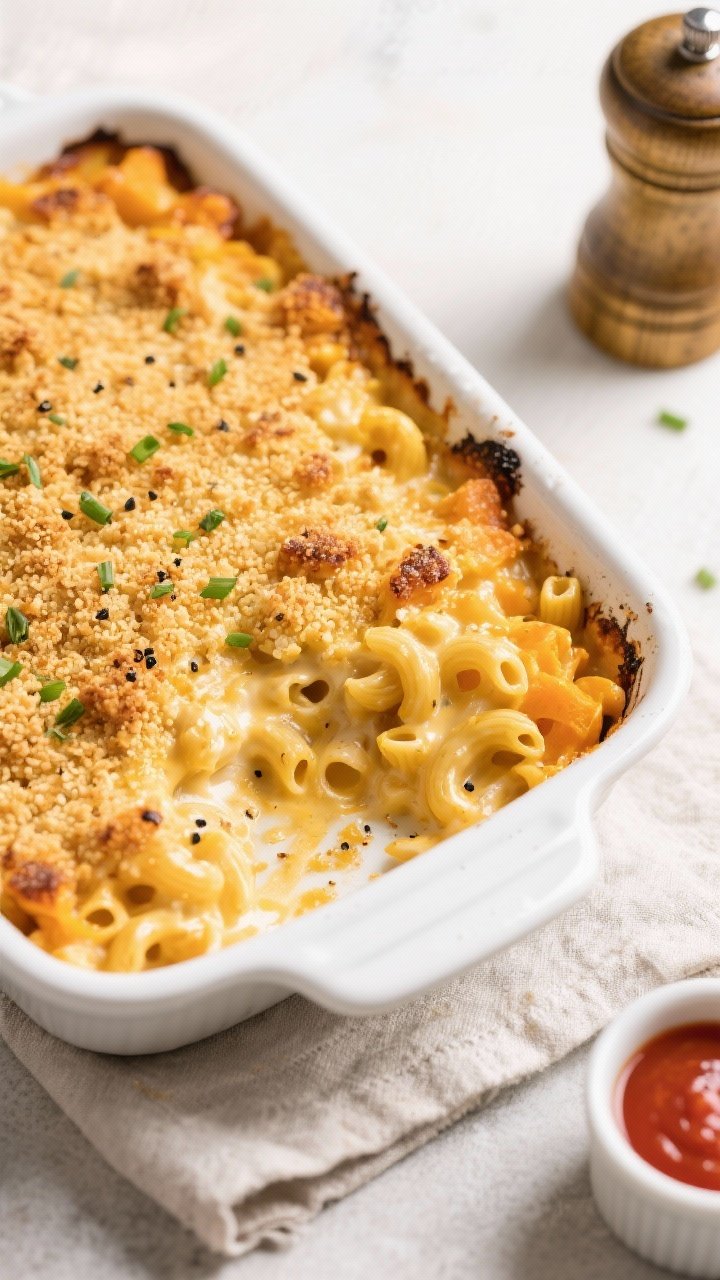
- Prep the squash: Peel, seed, and cube the butternut squash into 1-inch pieces. The smaller the cubes, the faster and more evenly they cook.
- Sweat the aromatics: In a large pot, heat the olive oil over medium.
Add onion and a pinch of salt; cook 5–6 minutes until translucent. Stir in garlic for 30 seconds—fragrant, not burnt.
- Simmer the squash: Add squash and broth. Bring to a simmer, cover, and cook 12–15 minutes until the squash is very tender when pierced.
- Blend the base: Transfer the squash mixture to a blender.
Add milk, cream, Dijon, nutmeg, smoked paprika, and butter. Blend until completely smooth and glossy. Taste and season with salt and pepper.
It should be slightly salty—cheese will mellow it.
- Boil the pasta: While blending, cook pasta in well-salted boiling water until just shy of al dente (about 1 minute less than package). Drain, reserving 1/2 cup pasta water.
- Cheese time: Return the blended sauce to the pot over low heat. Add cheddar and Gruyère in small handfuls, stirring until melted and silky.
Keep it low and slow to prevent separation.
- Marry pasta and sauce: Add drained pasta. Toss gently until coated. If the sauce is too thick, loosen with a splash of reserved pasta water.
If too thin, simmer 1–2 minutes to reduce.
- Optional crunchy topping: Heat oven to 400°F (200°C). Mix panko with melted butter and a pinch of salt. Transfer mac and cheese to a baking dish, top with panko, and bake 8–10 minutes until golden.
- Finish strong: Taste and adjust seasoning.
A final crack of black pepper or a dash of hot sauce is elite, IMO.
Keeping It Fresh
- Storage: Refrigerate in an airtight container for 3–4 days. The sauce stays creamy thanks to the squash—no weird clumps.
- Reheating: Warm gently on the stovetop over low heat with a splash of milk or broth to loosen. Microwave in short bursts, stirring between rounds.
- Freezing: Freeze in portions for up to 2 months.
Thaw overnight in the fridge, then reheat with extra liquid. Cheese purists may notice minor texture changes, but it’s still cozy and satisfying.
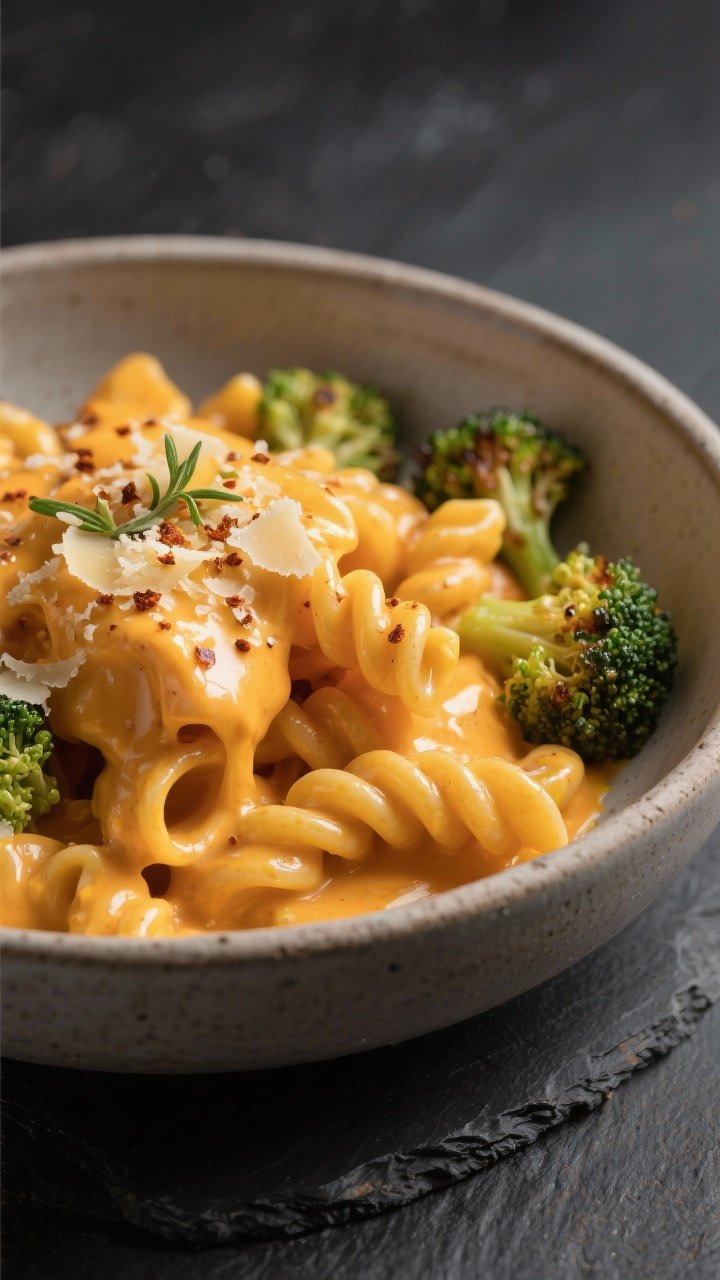
What’s Great About This
- Texture perfection: The squash purée builds a glossy emulsion so the cheese melts in seamlessly—no graininess.
- Balanced flavor: Sweet squash, sharp cheddar, and savory aromatics play nice together. The Dijon and nutmeg are subtle power-ups.
- Nutrition boost: Extra fiber and vitamins without sacrificing indulgence.
Sneaky veggies? Don’t mind if we do.
- Weeknight-friendly: One pot for sauce, one for pasta, done in about 40 minutes. Minimal drama, maximal payoff.
Avoid These Mistakes
- Using pre-shredded cheese: Anti-caking agents prevent smooth melting.
Freshly shred for a velvety finish.
- Overheating the cheese sauce: High heat breaks the emulsion and turns it greasy. Melt cheese gently on low.
- Under-seasoning: Squash is sweet; you need enough salt and a little acid/heat (Dijon, pepper, hot sauce) to balance.
- Overcooking pasta: It continues to cook in the sauce or oven. Stop at just shy of al dente.
- Chunky squash purée: If the blend isn’t silky, the texture will suffer.
Blend fully—no shortcuts.
Mix It Up
- Cheese swaps: Try white cheddar + fontina for extra melt, or add a splash of blue cheese for grown-up swagger.
- Protein: Fold in rotisserie chicken, crisp pancetta, or chorizo for a heartier dish.
- Veg upgrades: Roast broccoli florets or Brussels sprouts on a sheet pan and toss them in for texture and color.
- Spice lane: Add a pinch of cayenne, chipotle powder, or Calabrian chili paste. Warmth > bland.
- Gluten-free: Use GF pasta and panko. Choose a starchier shape that holds sauce well.
- Lighter version: Use all milk instead of cream and reduce cheese by 1/2 cup.
Still creamy, just less extra.
FAQ
Can I use canned or frozen butternut squash?
Yes. Frozen cubes work great—simmer until tender and blend. Canned purée is fine too; start with 1.5 cups, then thin with broth/milk to your preferred consistency.
Do I need a blender, or will a masher work?
A blender (or immersion blender) is the move.
A masher leaves fibers and tiny chunks, which can make the sauce feel grainy rather than silky.
What if my sauce splits or looks oily?
Take it off heat, whisk in a splash of hot pasta water or milk, and stir vigorously to re-emulsify. Next time, lower the heat when adding cheese and add it in small batches.
Which pasta shape is best?
Short, ridged shapes like cavatappi, shells, or elbows hold sauce beautifully. Avoid long noodles—they don’t cling as well and feel sloppy here.
Can I make it ahead for a party?
Definitely.
Assemble, cool, cover, and refrigerate. Reheat covered at 350°F with a splash of milk until hot, then add the breadcrumb topping and broil briefly for crunch.
Is there a dairy-free option?
Use unsweetened oat milk or cashew milk, vegan butter, and a good melting vegan cheese. The squash base helps keep it luscious even with dairy-free swaps.
Final Thoughts
This butternut squash mac and cheese gives you the best of both worlds: big comfort, clean finish.
It’s creamy and rich without feeling like a food coma—smart indulgence, basically. Once you taste how the squash transforms the sauce, you’ll wonder why you ever needed a gallon of cream. Make it once, tweak it to your style, and watch it become a house favorite—because who says cozy can’t also be clever?
Printable Recipe Card
Want just the essential recipe details without scrolling through the article? Get our printable recipe card with just the ingredients and instructions.
